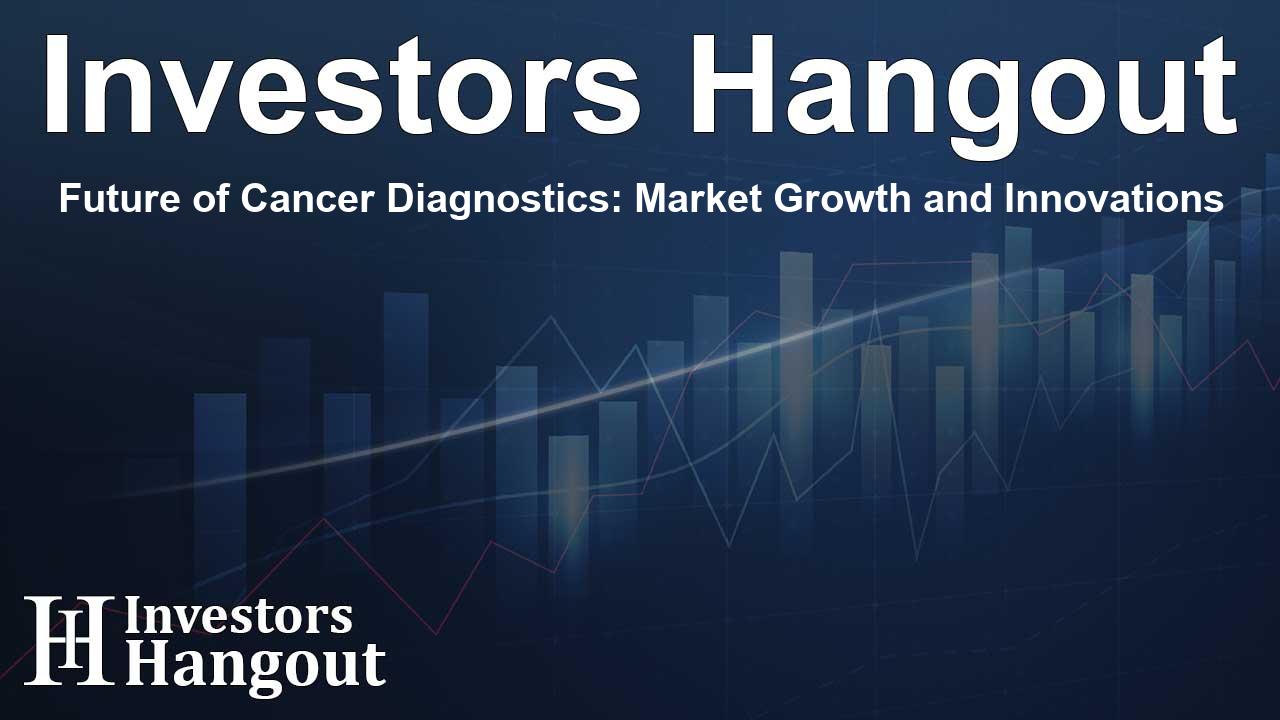Future of Cancer Diagnostics: Market Growth and Innovations

Exploring the Surge in Cancer Diagnostics Market
Cancer diagnostics have become a cornerstone of modern medicine, with the market set to expand significantly from USD 109.65 billion in 2024 to an anticipated USD 199.54 billion by 2034. This rapid growth is driven by a combination of factors, including an alarming increase in cancer incidence rates and revolutionary advancements in diagnostic technologies.
The Rising Demand for Cancer Detection
Cancer remains one of the leading causes of morbidity and mortality worldwide. As the prevalence of cancer continues to escalate, healthcare systems are placing greater emphasis on early detection methods. Early diagnosis can significantly improve patient outcomes, making comprehensive cancer screening an urgent public health priority.
Technological Advancements in Diagnostics
Recent advancements in diagnostic technologies have opened new frontiers in cancer detection. Techniques such as liquid biopsies and AI-enhanced imaging are revolutionizing the way tumors are identified and classified. Liquid biopsies, for instance, can detect circulating tumor DNA, providing crucial information without the need for invasive procedures.
Comprehensive Testing Methods
Cancer diagnostics encompass a range of testing methods including CT scans, MRIs, and various lab tests that enable healthcare providers to assess the presence and stage of cancer accurately. Each technique plays a unique role in detecting tumors, confirming diagnoses, and monitoring treatment responses.
Key Trends Shaping the Cancer Diagnostics Landscape
The cancer diagnostics market is influenced by emerging trends such as the widespread adoption of personalized medicine. As researchers gain deeper insights into the genetic and molecular bases of cancer, treatments can be tailored to individual patient profiles, enhancing efficacy and reducing side effects.
Growing Role of AI in Cancer Detection
AI technology is increasingly integrated into cancer diagnostics, enhancing efficiency and accuracy. Machine learning algorithms analyze vast datasets, helping clinicians detect subtle patterns that may indicate cancerous changes. For instance, AI has shown promise in evaluating imaging tests, allowing for earlier and more precise detection of anomalies.
Growing Awareness and Accessibility
Public awareness regarding cancer screening and early detection has significantly improved, leading to increased screening rates. This outreach, combined with advancements in technology, aims to ensure that all populations have access to essential diagnostic tools. Nonetheless, challenges remain in terms of affordability and availability, particularly in lower-income regions.
Regional Market Insights
The North American region currently leads the global cancer diagnostics market, buoyed by advanced healthcare infrastructure and a strong emphasis on research and development. Major investments in cancer research facilities and supportive reimbursement policies foster an environment conducive to innovative diagnostic solutions.
Emerging Markets in Cancer Diagnostics
In contrast, the Asia-Pacific region is expected to exhibit the highest growth rate in the upcoming years. An increasing prevalence of cancer, coupled with expanding healthcare access and investment in technology, positions countries such as China and India as significant players in the market. Collaborative efforts in public health initiatives have bolstered screening programs, improving early detection rates.
Challenges Faced by the Cancer Diagnostics Market
Despite the promising outlook, the cancer diagnostics market encounters several limitations, including the high cost of advanced diagnostic technologies. Also, in many developing nations, a lack of public awareness regarding screening hampers early diagnosis efforts.
Conclusion: A Bright Future for Cancer Diagnostics
The cancer diagnostics market is on the cusp of transformative growth, driven by technology advancements and a heightened focus on early detection. Companies in this space are continuously innovating, addressing challenges, and improving access to lifesaving diagnostics. The next decade is expected to showcase significant strides in how cancer is detected, treated, and managed, paving the way for improved patient outcomes and a healthier future.
Frequently Asked Questions
What is the projected value of the cancer diagnostics market by 2034?
The cancer diagnostics market is projected to reach approximately USD 199.54 billion by 2034.
What factors are driving the growth of cancer diagnostics?
The growth is primarily driven by the increasing prevalence of cancer, advancements in diagnostic technologies, and heightened awareness of early detection.
How is AI influencing cancer diagnostics?
AI enhances the accuracy and efficiency of cancer diagnostics by analyzing large datasets to identify patterns that may indicate cancer.
Which region currently dominates the cancer diagnostics market?
North America dominates the cancer diagnostics market, driven by advanced healthcare infrastructure and strong investments in research.
What challenges does the cancer diagnostics market face?
Challenges include high costs associated with advanced techniques and a lack of awareness in many developing regions, affecting early diagnosis rates.
About The Author
Contact Dominic Sanders privately here. Or send an email with ATTN: Dominic Sanders as the subject to contact@investorshangout.com.
About Investors Hangout
Investors Hangout is a leading online stock forum for financial discussion and learning, offering a wide range of free tools and resources. It draws in traders of all levels, who exchange market knowledge, investigate trading tactics, and keep an eye on industry developments in real time. Featuring financial articles, stock message boards, quotes, charts, company profiles, and live news updates. Through cooperative learning and a wealth of informational resources, it helps users from novices creating their first portfolios to experts honing their techniques. Join Investors Hangout today: https://investorshangout.com/
The content of this article is based on factual, publicly available information and does not represent legal, financial, or investment advice. Investors Hangout does not offer financial advice, and the author is not a licensed financial advisor. Consult a qualified advisor before making any financial or investment decisions based on this article. This article should not be considered advice to purchase, sell, or hold any securities or other investments. If any of the material provided here is inaccurate, please contact us for corrections.
